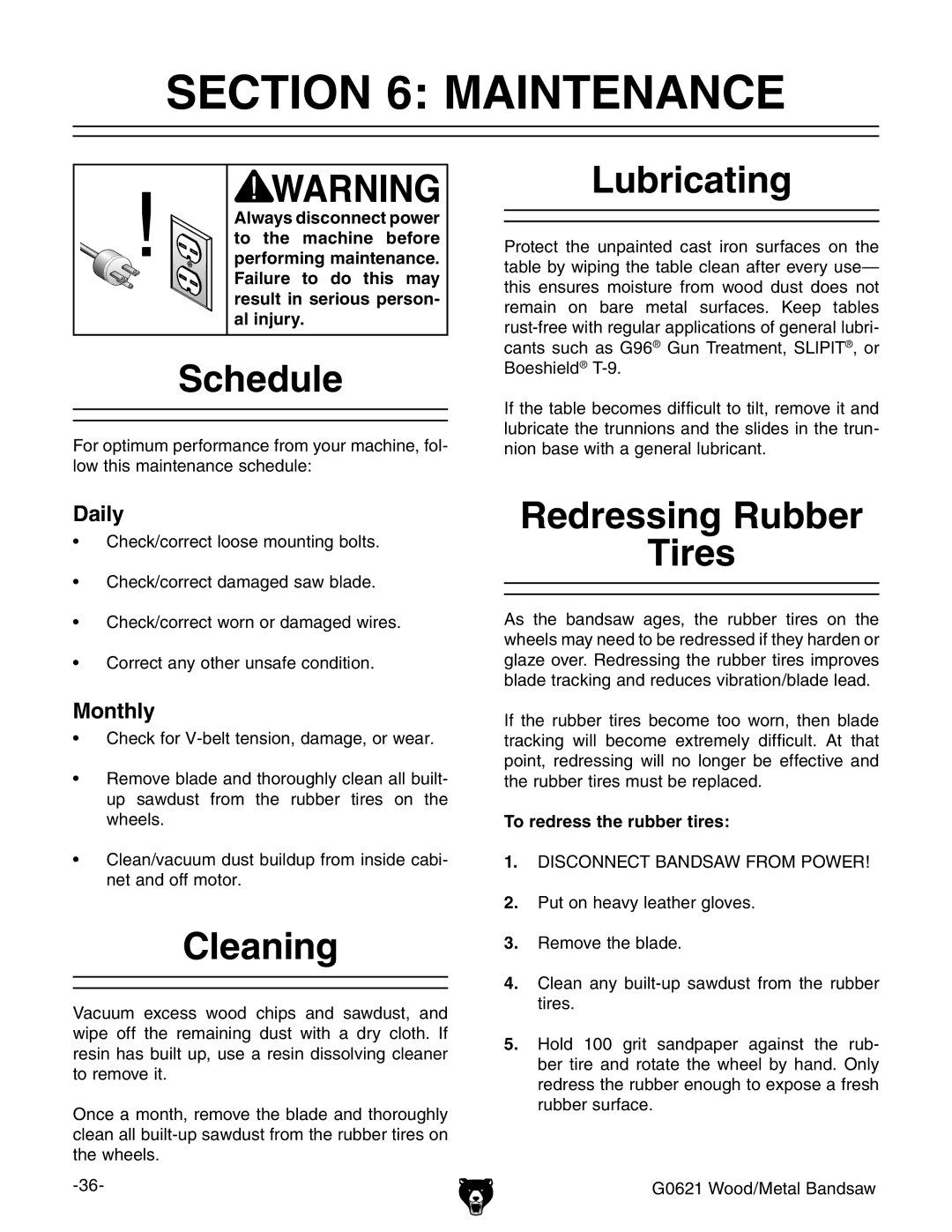
SECTION 6: MAINTENANCE
Always disconnect power to the machine before performing maintenance. Failure to do this may result in serious person- al injury.
Schedule
For optimum performance from your machine, fol- low this maintenance schedule:
Daily
•Check/correct loose mounting bolts.
•Check/correct damaged saw blade.
•Check/correct worn or damaged wires.
•Correct any other unsafe condition.
Monthly
•Check for
•Remove blade and thoroughly clean all built- up sawdust from the rubber tires on the wheels.
•Clean/vacuum dust buildup from inside cabi- net and off motor.
Cleaning
Vacuum excess wood chips and sawdust, and wipe off the remaining dust with a dry cloth. If resin has built up, use a resin dissolving cleaner to remove it.
Once a month, remove the blade and thoroughly clean all
Lubricating
Protect the unpainted cast iron surfaces on the table by wiping the table clean after every use— this ensures moisture from wood dust does not remain on bare metal surfaces. Keep tables
If the table becomes difficult to tilt, remove it and lubricate the trunnions and the slides in the trun- nion base with a general lubricant.
Redressing Rubber
Tires
As the bandsaw ages, the rubber tires on the wheels may need to be redressed if they harden or glaze over. Redressing the rubber tires improves blade tracking and reduces vibration/blade lead.
If the rubber tires become too worn, then blade tracking will become extremely difficult. At that point, redressing will no longer be effective and the rubber tires must be replaced.
To redress the rubber tires:
1.DISCONNECT BANDSAW FROM POWER!
2.Put on heavy leather gloves.
3.Remove the blade.
4.Clean any
5.Hold 100 grit sandpaper against the rub- ber tire and rotate the wheel by hand. Only redress the rubber enough to expose a fresh rubber surface.
